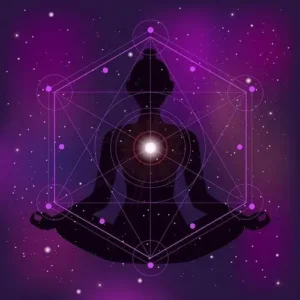
Pain is considered the 5th Vital Sign
We typically take our health for granted…
Until a physical limitation makes it impossible for us to carry out our daily lives. Pain is, in most cases, the symptom that leads people to seek help from a healthcare professional, be it a doctor, physiotherapist, osteopath or similar, and is considered a very important symptom for the diagnosis of various diseases. .
What is Pain?
We can all feel discomfort for some time – weeks, or even months, depending on each person’s pain tolerance; We may wake up with some pain or morning stiffness, but as these symptoms disappear throughout the day, and from day to day, we go about our lives.
But what is Pain? The pain is described by Portuguese Association for the Study of Pain (based on the definition of the International Association for the Study of Pain) as:

“An unpleasant sensory and emotional experience associated, or similar to that associated, with actual or potential tissue damage.”
It is always considered a personal experience that is influenced to different degrees/levels by biological, psychological and social factors (which is why it is said to have a biopsychosocial or multidimensional origin).
The most important thing to remember regarding this definition is that the existence of pain does not necessarily mean that there is damage (that is, actual tissue damage). This means that a person can have:
-
- pain with damage (tissue alteration),
-
- no pain with a lot of damage,
-
- lots of pain with minimal damage.
Pain is influenced by much more than just body tissue, it is also affected and influences other areas of your life. Emotions, sensations, beliefs about pain and social aspects are related to persistent pain. This way of looking at pain is called the bio-psychosocial model.
It means that all areas of your life can influence pain. This is good news because it means you have many options for treating it.


How to characterize pain?
One of the ways to characterize pain is through intensity on a scale, which can be numerical, visual, or qualitative. The one that is most commonly used is the analogous numerical scale, in which the therapist asks the patient what number he attributes to his pain, from 0 to 10. With the help of this scale, he can make the equivalence between the intensity of his Pain and a numerical classification, with 0 corresponding to the “No Pain” classification, and 10 to “Maximum Pain” (pain of maximum imaginable intensity). The registered value is always whatever you feel.
You can also try to answer the following questions:
-
- What makes it worse?
-
- What relieves?
-
- How does it vary throughout the day?
-
- How does it vary with movements or efforts? What kind of movements/exercises?
-
- Do stressful days at work or in your personal life cause changes in pain?
Acute pain and chronic pain
There are two concepts that you may have already heard about when you go to the doctor, physiotherapist, osteopath or even in conversation with family, friends or co-workers. They are: chronic pain and acute pain. What are the differences between them exactly?
Acute pain is pain that, up to a certain point, has beneficial effects on the body. It is an alarm signal that warns of the occurrence of something that is not right in our body: be it a trauma, a burn, a joint leak or a gastric ulcer, among others. Still, it must be combated so that it does not eventually become a chronic pain.
Chronic pain is pain that persists three to six months after its onset, it has no advantage for the patient It is now known that, in addition to of the suffering it causes, chronic pain has repercussions on the individual’s physical and mental health, leading, for example, to changes in the immune system with a consequent decrease in the body’s defenses and increased susceptibility to infections. In the field of mental health, chronic pain is commonly associated with insomnia, a history of anxiety and depression, and can even lead to suicide in the most extreme cases.

Statistics about pain
2.9% of the population suffered from low back pain or other chronic back problems.
24.1% suffered from neck pain or other chronic neck problems.
24.1% were diagnosed with osteoarthritis.
From 16 to 64, 37.8% of people evaluate their health negatively.
Only 14.8% of people aged 65 or over evaluate their health positively.
The Women evaluate their health status more negatively (45%) than men (55%).
Origin of Chronic Pain
According to International Association for the Study of Pain, chronic pain has multiple origins: physical, psychological and environmental .
Among the physics we have:
-
- inflammation,
-
- stress
-
- muscle tension
-
- injury
-
- postural problems
-
- muscle imbalances
-
- food allergies and sensitivities
-
- ongoing disease process (by example, autoimmune disease)
-
- nutrient deficiencies
-
- inadequate sleep, among others
Psychological and environmental:
-
- depression
-
- anxiety
-
- post-traumatic stress disorder
-
- social isolation
-
- physical, psychological abuse or trauma
-
- sexual abuse
-
- exposure to diseases, among others
Six steps to reduce the likelihood of having Chronic Pain
1. Maintain a balanced diet and weight
2. Exercise regularly
3. Eliminate unhealthy routines
4. Choose healthy postures for working and resting
5. Learn stress management techniques
6. Consult a doctor or therapist whenever necessary
See our article about Self Awareness, and the Ebook that we prepared for you about Chronic Pain, for more on point 5.
How is chronic pain treated?
From what has been explained so far, we can see that effective pain treatment requires a comprehensive approach, that is, holistic and integrative. If a few years ago we repeatedly heard the expression “this is your head”, when talking about chronic pain, today it is known that the central nervous system actually plays a preponderant role in the origin and treatment of chronic pain.
Many therapists (whether massage therapists or manual therapists, physiotherapists, osteopaths, chiropractors or personal trainers) care for the person in pain typically through a more physical, biomechanical approach and through movement and/or exercise. However, there is growing scientific evidence that shows that the biomechanical approach (through physical therapies, movements or exercises) alone may not fully address the cause of pain, and therefore not effectively cure it.
If you suffer from chronic pain and have tried different therapies, you have probably already experienced physiotherapy, osteopathy, or even the hands of an experienced massage therapist. Possibly not with the results you expected, which is why you are now reading this article. Recent developments in the area of health and pain neuroscience seek to integrate the biomechanical approach considering the multidimensional nature of pain, considering nutrition and even the quality of sleep. As mentioned at the beginning of this text, this approach is called whether by biopsychosocial or integrative.
The integrative approach to pain is relevant because it reflects advances that are being made in the field of pain treatment, but also in the fields of psychology, genetics (and epigenetics), trauma and nutrition. Many people with chronic pain have already carried out their own research, consulted different professionals and, often, arrive at the assessment already aware of these advances in the area of pain treatment and health promotion.
One of the most recent discoveries on this topic is the recognition of new “axes”: the intestine-brain axis, the intestine-joint axis and the intestine-pain axis.
We will try to explain briefly and succinctly. If you want to know more information about these topics you can consult the books “Cérebro de Farinha”, “O Intestino Feliz” or “O Segundo Cérebro”, or “Heal Your Pain Now”. Simply put, this means that there are interrelationships between our brain, the intestine, the joints and pain. This connection is possible through one of the cranial nerves, the Vagus Nerve, which connects the brain and the intestine. Therefore, this also means that in the case of chronic pain, the problem is often generalized inflammation of the body, so-called systemic inflammation.
There is a direct and strong link between nutrient intake and pain. Pain is neither exclusive nor selective regarding the person’s weight, or the fact that they are within the mass index body for age, or above. However, there is a strong association between obesity and pain, due to the ability of excess adipose tissue to increase levels of inflammation. Mineral and vitamin deficiencies, resulting from a highly processed diet rich in fast foods, play an important role in the origin of chronic pain.


Six Tips for Managing Pain Through Food
1. Reduce inflammation and protect your body from oxidative stress (integrate fruits and vegetables)
2. Good fats (omega 3 and olive oil help reduce inflammation)
3. Prevent vitamin and mineral deficiency (mainly Vitamin D, B12 and magnesium)
4. Drink water (dehydration can increase sensitivity to pain)
5. Eat more fiber (fiber is important for a healthy microbiome)
6. Consume less ultra-processed foods and sugars (they have many calories and very few nutrients, increasing inflammation and oxidative stress)
Did you like this article? Share it with anyone who could benefit from this information or leave us a message.






